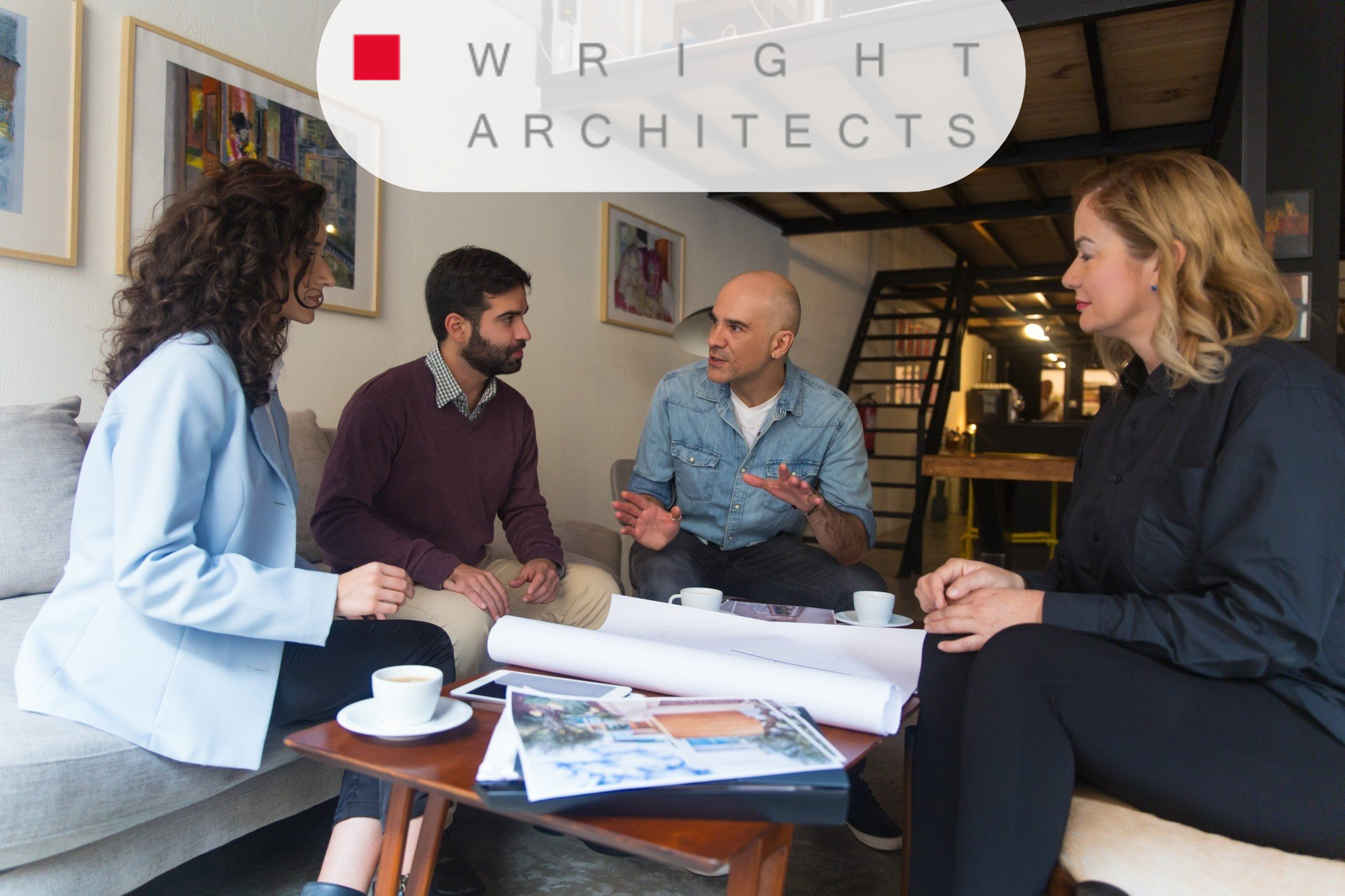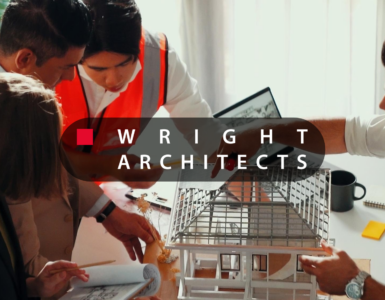The Complex Terrain of Protected Development
Across the Northeast, and especially in New York’s Hudson Valley, development often intersects with protected zones, areas subject to heightened environmental, cultural, or regulatory oversight. These protected areas are not only ecological treasures but also vital components of regional identity and community well-being. Floodplains along the Hudson River, wetlands rich with biodiversity, steep mountain slopes that define the valley’s dramatic vistas, and historically significant sites tied to centuries of heritage present both restrictions and opportunities.
For developers, such landscapes can appear to be a maze of limitations: zoning ordinances, environmental impact reviews, and preservation requirements that increase both cost and complexity. However, these same restrictions are increasingly recognized as drivers of innovation. Instead of treating regulatory frameworks as barriers, forward-thinking architects and planners see them as frameworks that challenge creativity, encourage the use of resilient materials, and demand designs that harmonize with the environment rather than override it.
Wright Architects, a respected firm specializing in Hudson Valley residential architecture, has built a reputation for navigating these complexities with skill and vision. The firm’s portfolio demonstrates that development within sensitive zones can go beyond compliance to achieve design excellence. With projects in flood-prone areas, steep terrain, and heritage-sensitive landscapes, Wright Architects showcases how architecture can balance sustainability, beauty, and functionality. By leveraging advanced site analysis, sustainable building practices, and a deep understanding of regional context, the firm demonstrates that working within constraints can produce some of the most forward-looking residential solutions.
This approach not only benefits homeowners, who gain unique and enduring spaces, but also strengthens communities by preserving the natural and cultural assets that make the Hudson Valley extraordinary. In doing so, Wright Architects positions protected development not as a compromise, but as a powerful opportunity to set new standards for residential design across the Northeast.
Regulatory and Environmental Pressures
Protected zones are governed by overlapping codes and jurisdictions that can easily overwhelm even experienced developers. Local zoning boards, state environmental agencies, and federal guidelines all contribute to the regulatory landscape, creating a multilayered framework that demands precise navigation. According to Hudson Valley Magazine, recent development surges have only heightened scrutiny on projects located near sensitive ecosystems, making regulatory compliance more critical than ever.
In the Hudson Valley, the intersection of natural beauty and historical significance creates an especially complex environment for residential and mixed-use projects. Architects must address challenges such as:
- Stringent stormwater management requirements, which dictate how runoff is controlled to prevent erosion, protect waterways, and reduce flood risks. Designs often incorporate bioswales, permeable pavements, and rain gardens that not only comply with regulations but also enhance the landscape’s ecological value.
- Restrictions on tree removal and land grading, which preserve the character of wooded parcels and maintain slope stability. Instead of clearing large swaths of land, innovative site planning seeks to adapt structures to the terrain, resulting in homes that feel more integrated with their natural surroundings.
- Historic district oversight for exterior materials and massing, which ensures that new developments respect the architectural language of nearby landmarks. This often requires sourcing authentic or regionally inspired materials and designing forms that echo, rather than disrupt, the historical rhythm of a neighborhood.
- FEMA flood zone construction standards, which demand elevated foundations, reinforced materials, and adaptable floor plans in areas prone to rising waters. These measures not only safeguard homeowners but also demonstrate resilience in the face of climate change.
Rather than viewing these as deterrents, Wright Architects positions them as catalysts for innovation, integrating resilient design with regionally appropriate solutions. By embracing these pressures, the firm transforms what could be seen as bureaucratic hurdles into opportunities to redefine Hudson Valley residential architecture. Each regulation becomes a design parameter that sparks creativity, leading to homes that are not only compliant but also environmentally responsive, visually compelling, and built to last.
This approach has a broader implication: it reinforces the idea that regulatory and environmental pressures, far from stifling design, can actually foster a more sustainable and thoughtful built environment. Through strategic planning and creative execution, Wright Architects demonstrates that the future of development in protected zones depends on collaboration with, rather than resistance to, the natural and cultural systems that shape the Hudson Valley.

Designing for Water: Floodplains and Riversides
The Hudson River and its tributaries shape much of the region’s residential development, carving a landscape that is both beautiful and highly regulated. With flood maps being updated regularly, building near waterways requires both foresight and technical skill, as design decisions must anticipate not only today’s conditions but also future climate scenarios.
For many homeowners, the appeal of riverside living comes with concerns about rising water levels, erosion, and seasonal flooding. Wright Architects employs strategies that extend beyond compliance, aligning with energy-efficient house plans to mitigate both environmental and economic risk. Elevated foundations protect living spaces from storm surges, while breakaway wall systems allow lower-level structures to absorb water pressure without compromising the integrity of the home. Integrated drainage landscapes, featuring swales, retention gardens, and permeable hardscapes, manage runoff in ways that protect properties while preserving natural hydrology and river views.
What sets Wright Architects apart is its ability to merge resilience with aesthetics. The firm’s expertise as a PHIUS Certified Passive House Consultant ensures that even in flood zones, buildings achieve top-tier efficiency without sacrificing resilience. In practice, this means that waterfront projects are designed to perform exceptionally under stress, using high-performance envelopes, airtight construction, and passive ventilation strategies that reduce reliance on mechanical systems.
The U.S. Department of Energy underscores the importance of combining resilience with performance, noting that homes in climate-sensitive zones must minimize energy demand to ensure long-term viability. Wright Architects demonstrates this principle by integrating renewable energy systems, such as solar panels and geothermal heating, directly into designs. These systems not only reduce the carbon footprint of riverside homes but also provide homeowners with greater energy independence in the event of grid disruptions caused by storms or flooding.
At the same time, the firm remains attentive to the unique character of the Hudson Valley’s riverside landscapes. Materials are selected to withstand moisture while reflecting the regional vernacular, and site layouts prioritize unobstructed access to water views. By combining technical expertise with a respect for place, Wright Architects delivers waterfront homes that balance safety, efficiency, and beauty.
In doing so, the firm proves that building along rivers and floodplains does not have to mean compromising on comfort or design ambition. Instead, these environments become an opportunity to showcase how Hudson Valley residential architecture can lead the way in harmonizing human habitation with the forces of nature.
Mountain Terrain and Steep Slopes
The Catskill Mountains and Shawangunk Ridge present another protected landscape with unique demands, where every parcel of land carries geological, environmental, and aesthetic considerations. Building on slopes requires far more than a standard blueprint, it demands careful grading, erosion control, and structural ingenuity to ensure both safety and long-term performance.
Unlike level sites, mountain terrain is inherently dynamic. Soil stability varies, water runoff can intensify erosion, and construction access is often limited by narrow roads and steep inclines. These challenges make custom solutions not only advantageous but often the only viable approach, reinforcing the continued importance of custom home design services. Wright Architects approaches these projects by blending engineering precision with architectural sensitivity, ensuring that homes do not fight against the land but instead adapt seamlessly to it.
Practical strategies are as much ecological as they are structural. Retaining walls double as design features, creating terraces that expand outdoor living areas while stabilizing slopes. Native vegetation is strategically planted to anchor soil, manage runoff, and restore natural habitats disrupted during construction. Materials sourced locally, stone, reclaimed timber, and natural slate—not only reduce environmental impact but also tie homes visually and culturally to the surrounding landscape. This design philosophy allows each residence to feel rooted in the mountains rather than imposed upon them.
While prefab and modular strategies offer efficiency and cost benefits in flat terrains, they often cannot accommodate the complex engineering required in steep terrain. The precision adjustments necessary to anchor foundations, contour retaining structures, and balance structural loads go beyond standardized modules. This is where Wright Architects’ dual role as designer and collaborator within both Design-Build and Design-Bid-Build frameworks becomes essential. By integrating design vision with structural necessity, the firm ensures projects remain cohesive, efficient, and resilient, even under the most demanding site conditions.
The result is a portfolio of mountain homes that capture panoramic views, harness passive solar advantages, and establish strong connections between indoor and outdoor spaces. These are residences that embrace the drama of the Catskills and Shawangunks while meeting the highest standards of safety, efficiency, and architectural integrity. Wright Architects demonstrates that steep terrain, far from being a limitation, is an opportunity to craft homes that embody the true spirit of Hudson Valley residential architecture, bold, sustainable, and deeply in tune with place.
Heritage and Historic Districts
Many Hudson Valley towns, including Kingston and Hudson, maintain stringent preservation standards that shape the way new construction and renovations unfold. Within these historic districts, every design decision carries cultural weight: the scale of a roofline, the color of a façade, the materials used in window casings, all are scrutinized to ensure harmony with centuries-old streetscapes. For architects, this context presents a delicate balance between respecting the past and embracing the future.
Architectural projects in these zones require sensitivity to historic character while meeting modern expectations for comfort, accessibility, and sustainability. Local preservation boards often mandate adherence to original proportions, period-appropriate materials, and historically inspired details. At the same time, homeowners increasingly demand open interiors, energy efficiency, and the latest in sustainable building technologies. Navigating these dual imperatives requires both creativity and a deep understanding of regulatory frameworks.
Wright Architects’ work in sustainable architecture in Kingston NY reflects this balance with clarity and purpose. The firm approaches historic façades not as obstacles but as opportunities to preserve cultural identity. Exteriors are carefully restored, preserved, or echoed using locally sourced materials that match historic textures—brick, stone, wood, and slate, while discreetly incorporating modern techniques to improve durability and performance. Behind these traditional façades, interiors are reimagined for modern living. Advanced insulation systems, high-performance glazing, and efficient HVAC installations create homes that meet today’s expectations for comfort while dramatically reducing energy use.
Low-impact materials, such as reclaimed wood, lime-based plasters, and natural paints, allow these historic properties to maintain authenticity while aligning with sustainable design principles. Smart home technologies are subtly integrated to support efficiency without compromising the character of historic interiors. This dual commitment safeguards cultural identity while meeting the demands of environmentally conscious buyers who value both heritage and innovation.
Beyond Kingston, Wright Architects’ expertise extends to towns across the Hudson Valley where similar preservation challenges exist. In every case, the firm demonstrates that Hudson Valley residential architecture can honor the integrity of historic districts while contributing to a greener, more resilient future. Rather than treating preservation as a limitation, Wright Architects treats it as a design framework, one that enriches the dialogue between history and contemporary living.
Innovation at the Intersection of Restriction and Design
Protected zones often push architects to innovate in unexpected ways, forcing design teams to rethink conventional approaches and embrace solutions that serve multiple purposes at once. In regions like the Hudson Valley, where environmental, cultural, and regulatory pressures converge, this mindset transforms limitations into opportunities for groundbreaking design. Wright Architects identifies several strategies that are transforming mid- and high-end residential projects in the region:
- Passive Solar Orientation: Homes are carefully oriented to maximize natural light and reduce heating demand, even within constrained lot placements or irregular topography. Strategic window placement, thermal massing, and seasonal shading techniques allow interiors to remain bright and warm in winter while naturally cooling in summer. These design moves not only improve comfort but also reduce long-term energy consumption, aligning with regional sustainability goals.
- Green Roofs and Living Walls: Once considered avant-garde, these features are now increasingly accepted by zoning boards as viable stormwater management strategies. Green roofs absorb rainfall, reduce runoff, and extend roof lifespans while creating additional outdoor spaces. Living walls contribute to thermal insulation, improve air quality, and visually soften modern façades, allowing new constructions to blend more gracefully into sensitive environments.
- Resilient Materials: Fiber-cement siding, engineered timber, and recycled composites are redefining durability in residential architecture. These materials offer resistance to moisture, pests, and fire while maintaining a low ecological footprint. In heritage districts or steep-slope environments, locally quarried stone and reclaimed timber are incorporated to tie structures to the Hudson Valley’s vernacular, reinforcing a sense of place while meeting modern performance standards.
- Smart Home Integration: Adaptive systems regulate heating, cooling, and energy use to meet both client expectations and regulatory efficiency targets. Wright Architects leverages technologies such as energy monitoring dashboards, automated shading systems, and app-controlled HVAC systems that respond to both occupant preferences and environmental conditions. This seamless integration of technology not only satisfies regulatory frameworks but also enhances the daily living experience.
Together, these innovations reinforce the firm’s reputation as a modern home architect Hudson Valley, adept at blending advanced technology with contextual sensitivity. By approaching constraints as design opportunities, Wright Architects demonstrates how forward-looking solutions can create residences that are sustainable, resilient, and deeply attuned to their surroundings.
Data and Market Trends
The financial viability of building in protected zones is closely linked to sustainability outcomes, and recent industry data highlights just how powerful this connection has become. Far from being a niche concern, resilient and sustainable design is now a central driver of real estate value in the Hudson Valley and across the Northeast.
- Statista reports that the U.S. green residential building sector is expected to exceed $150 billion by 2030, with demand concentrated in environmentally sensitive regions like the Northeast. This growth reflects both regulatory momentum and consumer preference, as buyers increasingly view energy efficiency and environmental stewardship not as luxuries, but as baseline expectations for modern housing.
- Properties in flood zones that incorporate resilient design measures retain value better than those without, according to FEMA data. Homes that feature elevated foundations, advanced drainage systems, and durable materials not only minimize risk for owners but also maintain stronger resale potential, even in markets where climate-related risks are heavily scrutinized.
- Sustainable projects in the Hudson Valley have seen rising market premiums, with buyers increasingly prioritizing resilience and energy performance over size. Smaller, energy-efficient homes with energy-efficient house plans often outperform larger but less efficient properties, signaling a clear market shift toward quality, longevity, and sustainability.
For developers and investors, these metrics confirm that compliance-driven design can also be profitable design. What may initially appear as added cost, specialized materials, advanced building systems, or rigorous planning, translates into long-term financial upside through higher resale values, lower operating costs, and stronger market differentiation.
Wright Architects has recognized this shift, leveraging its role as both designer and advisor to help clients see beyond immediate construction budgets. By emphasizing the economic resilience of sustainable strategies, whether in flood zones, steep slopes, or historic districts, the firm positions each project not only as an architectural achievement but also as a sound investment. In a market increasingly shaped by climate pressures and regulatory oversight, this combination of design integrity and financial foresight defines the future of Hudson Valley residential architecture.

The Role of Expertise in Protected Zone Development
Architectural expertise is critical in reconciling competing demands: regulatory compliance, environmental stewardship, client lifestyle expectations, and financial feasibility. In protected zones, where these demands overlap and often conflict, the ability to synthesize them into a coherent design strategy is what separates successful projects from those that stall.
Wright Architects, with its credentials and regional experience, demonstrates how expertise turns barriers into opportunities. The firm’s work across the Hudson Valley shows that the role of the architect is not limited to producing drawings, it extends to interpreting complex codes, engaging with zoning boards, collaborating with engineers, and guiding clients through the regulatory process. This holistic approach ensures that projects move forward efficiently while maintaining design integrity.
By leveraging knowledge of building codes, passive strategies, and material science, the firm delivers solutions that align with both short-term project goals and long-term community resilience. For example, advanced envelope systems are paired with energy-efficient house plans to reduce operating costs while exceeding regulatory standards. Local materials are carefully evaluated not only for aesthetic compatibility with historic and natural contexts but also for their performance in flood zones, steep slopes, and high-moisture environments.
This technical expertise is complemented by a strong understanding of client aspirations. In mid- and high-end residential markets, lifestyle expectations include open layouts, wellness-focused features, and seamless integration of technology. Wright Architects ensures that these desires are not compromised by regulatory frameworks but instead enhanced by them, demonstrating how compliance can lead to smarter, more resilient living spaces.
In doing so, the firm exemplifies the enduring value of architectural leadership in an era where protected zones are no longer peripheral but central to the future of residential development. Expertise becomes not only a safeguard against risk but also a catalyst for innovation, sustainability, and community well-being. Wright Architects’ role as a modern home architect Hudson Valley positions it as both a creative partner and a trusted advisor, guiding clients toward homes that are beautiful, resilient, and built to thrive within the region’s most sensitive landscapes.
Next Steps
For those seeking to understand how architectural vision can thrive within the complexities of protected zones, Wright Architects offers both inspiration and proven expertise. The firm’s approach, rooted in sustainability, resilience, and a deep respect for the Hudson Valley landscape, demonstrates how design can transcend regulation to create enduring value for clients and communities alike.
- Learn more about Wright Architects’ work by visiting wrightarchitectspllc.com, where their philosophy and process are outlined in detail.
- For design inquiries, media contact, or project discussion, connect with the firm directly to explore how their team can bring clarity, creativity, and leadership to your residential vision.
- Explore the full portfolio of residential architecture and sustainable design online to see how Wright Architects has transformed challenging sites, floodplains, steep slopes, and historic districts, into homes that embody innovation, resilience, and timeless beauty.
Taking the next step begins with a conversation. Whether you are a homeowner, developer, or community stakeholder, Wright Architects stands ready to guide projects from concept to completion, ensuring that every design not only meets expectations but sets a new benchmark for Hudson Valley residential architecture.





